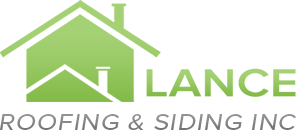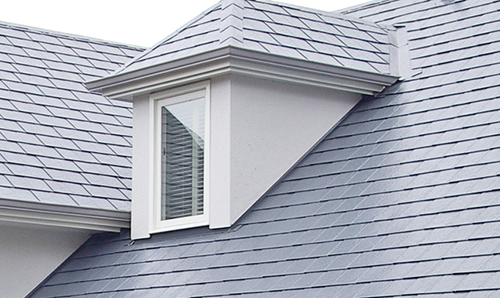Can I roof over the top of my existing roof?
The question often comes up about whether an existing composition shingle roof should be torn off or if an overlay (or recover) is possible. Overlays save on time, labor, and disposal costs. If the existing roof has only one layer, lays flat, and there aren’t any problems with the roof deck, removal is not necessary.
The roofer didn’t remove the little plastic strip from the back of my shingles. Should this have been removed?
No, it does not need to be removed. Many brands of shingle are designed so that the sealant seals right through the strip. The strip is there to help keep the shingles from sticking together before they are installed.
My shingles got beat up in the last hail storm we had and I’m tired of replacing them. What type of roof should I use?
If the hail is big enough, then it won’t matter what you use, the material will still get destroyed. There are some shingles that can take quite a hit and remain in good shape. These shingles have a class IV hail rating which is the highest hail rating available. You can also look into metal, but be careful. We’ve all seen the hoods of cars after quarter-sized hail storms.
I did some repairs to my roof and noticed there is no roofing felt under them. Is this the correct way to install shingles?
No, it is not. Unless it’s an overlay (recover), there should be felt underlayment separating the roofing materials and the deck. Many home builders install roofs this way so that they can save money. It is frowned upon by the National Roofing Contractor’s Association, the Asphalt Roofing Manufacturer’s Association, and any roofer with integrity. Underlayment provides a vapor barrier between the roof deck and the shingles, is a secondary waterproofing element of the roof, and prevents the wood deck from leaching oils from the asphalt shingles.
What’s the minimum slope I need to install asphalt shingles?
Don’t go lower than 2:12 which means two inches of vertical rise for every twelve inches of horizontal run. Anything between 2:12 and 4:12, you should consider installing two layers of #15 felt underlayment, reducing the exposure of the shingle – the exposure being the part of the shingle that remains visible after installation, or both. In lieu of both of these, you may want to install a self-adhering ice and water underlayment over the entire deck surface.
What kind of felt underlayment should I use?
Felt paper is a vapor barrier plus keeps the oils in the shingles from leaching out and into the wood substrate (i.e. plywood or OSB roof deck), so #15 or 30 will work for any shingle roof. Ice and water shield in the valleys and eaves is an additional underlayment requirement for most counties in the Dayton, Ohio area.



